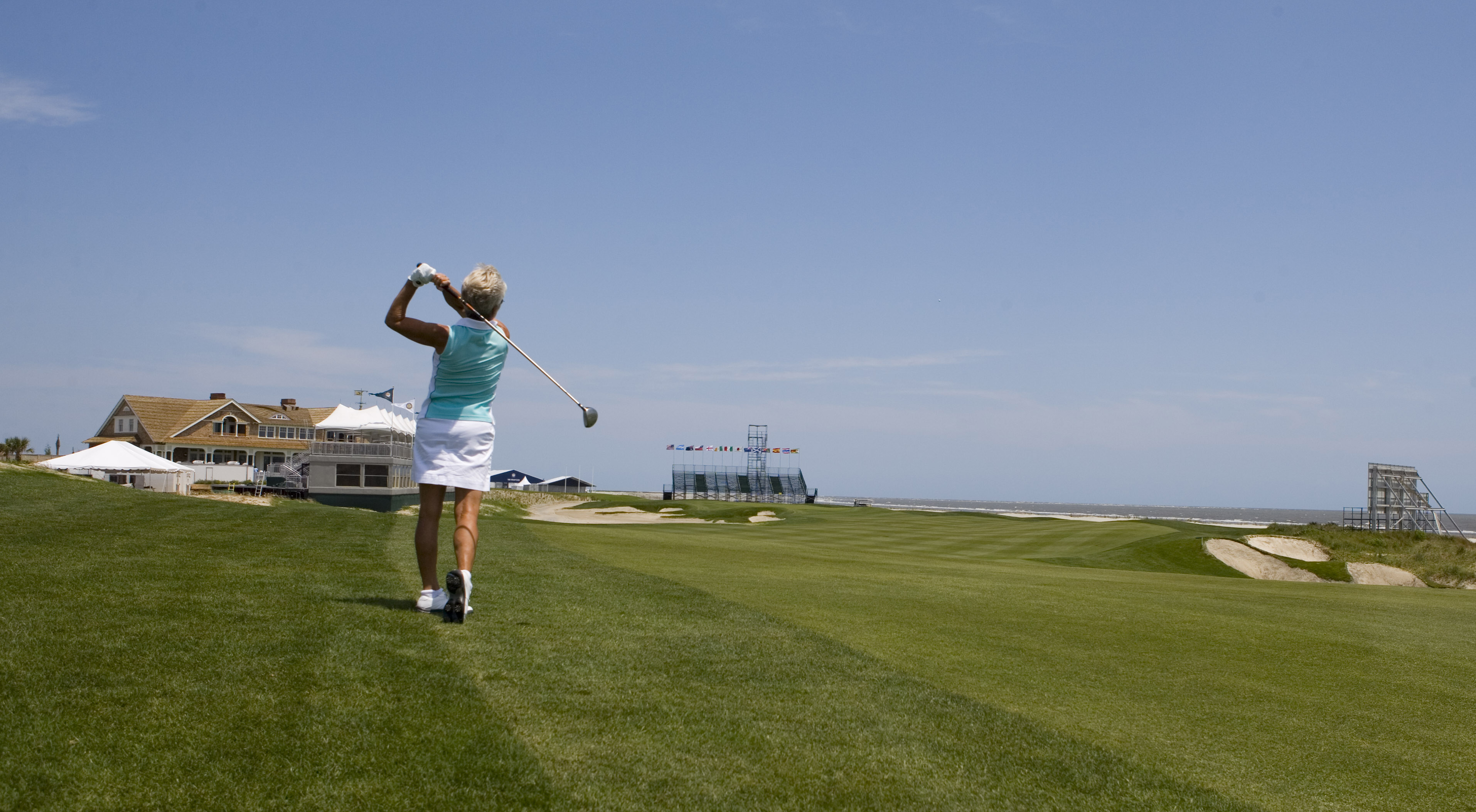Site of Ryder meltdown back in major rotation
Kiawah Island 'a severe golf course'

A golfer hits a shot toward the new clubhouse behind the 18th green of the Ocean Course at Kiawah Island last week. Crews are preparing the course for the senior PGA Championship on Thursday.

Golfers play on the 17th hole of Ocean Course.
Kiawah Island, S.C. ? It was a majestic course built for one of golf’s biggest events, a seaside venue guaranteed to test champions for generations to come.
But after the famed “War by the Shore” Ryder Cup frazzled nerves and embarrassed the world’s best golfers, the Ocean Course was left mostly to prowling alligators, movie producers and tourists who pay up to $320 a round.
Now, 16 years after that Ryder Cup left Mark Calcavecchia crying on the sand dunes, the layout is back in the major rotation, set to host the Senior PGA Championship this week and casting an eye to 2012, when it will host the PGA Championship.
“This is a severe golf course,” says Pete Dye, the 81-year-old architect of the course.
Flashbacks may be flying faster than birdies for the Ryder Cup players from 1991 who plan to play in the championship that starts Thursday. They include Hale Irwin, Raymond Floyd and Seve Ballesteros.
The only difference, says Ocean Course superintendent Jeff Stone, is “they don’t have a partner to cry on. They’re out there on their own.”
The layout earned its frightful reputation when Ryder Cup competitors struggled through three days of blowing wind and wayward shots. Ballesteros won a hole with a double-bogey 7. Calcavecchia went 8-over par over his final four holes, sending him to sulk in the sand. Hale Irwin shot a 41 on his final nine – and he won his pairing.
The competition’s lasting image was Europe’s Bernhard Langer sliding his 6-footer by the cup on No. 18 in the competition’s final singles match, earning America the victory.
In a recent interview, Dye said the biggest culprit wasn’t the course, but a 20-knot wind blowing off the Atlantic.
He watched Floyd and Fred Couples play a Ryder Cup practice round back then and hit easy wedges into the opening hole. When the competition began, Couples needed a 3-iron on the approach to handle the strong gusts.
It was blowing so hard, Dye recalled, that Irwin had to use a wood off the par-3 17th tee.
“Looking back at the whole event, nobody knew the golf course because nobody played the northwest wind,” Dye said.
High drama, to be sure, but nothing those involved wanted to repeat any time soon.
“The Ocean Course was perfect for the Ryder Cup,” said Dave Stockton, the U.S. captain in 1991, who plans to play this month. “But it will be unbelievable for stroke play.”
Roger Warren, the president of Kiawah Island Golf Resort, also was president of the PGA of America when the Ocean Course was awarded its majors. He remembers how thrilled he was in 1991 to watch the game’s top players take on a challenging layout. A few years later, before heading the resort, he played a round there.
“In many ways, I didn’t see it as being a fair golf course,” Warren said earlier this month.
So began the Ocean Course’s slow disappearance from golf’s major scene.
It took six years – and some Dye tweaks – before the end-of-the-season World Cup was played there in 1997, and again in 2003. In the meantime, the course served as backdrop for the golf fairy tale “The Legend of Bagger Vance,” its fog-draped holes gaining more mythical status on screen.
The inaugural, and now defunct, Warburg Cup brought Langer and some other ’91 Ryder Cup competitors back in 2001.
But, all along, the course has been a hit with vacationers. It plays host to about 20,000 rounds of golf a year – and to the gators that skim its brackish waterways along with stalking marsh birds and drowned Titleists.
When Warren arrived at Kiawah in 2003 as its director of golf, he began trying to convince PGA of America leaders they needed to play The Ocean Course. Warren says it was an easy sell.
Through it all, Dye tinkered with his design. Turf was added to offset erosion from the pounding sea. Collection areas were placed around several greens. Rough was grown to slow an errant ball’s path into the marshlands. Perhaps the most significant change came at the closing hole, where Dye shifted the 18th green some 60 feet closer to the seaside for a more dramatic approach.
A $22 million, expansive new clubhouse should be complete for this month’s event, despite an explosion in the kitchen that injured four construction workers on Friday, Warren said. Two had to be flown by helicopter to a hospital in Georgia for burn treatment. Warren said caterers would be used for food service during the event.
The course will play at about 7,200 yards for the Senior PGA Tour, a length Warren says certainly will grow by the time players arrive for the PGA Championship five years from now.
“It’s still a hugely challenging golf course, but it is fair,” Warren said.

